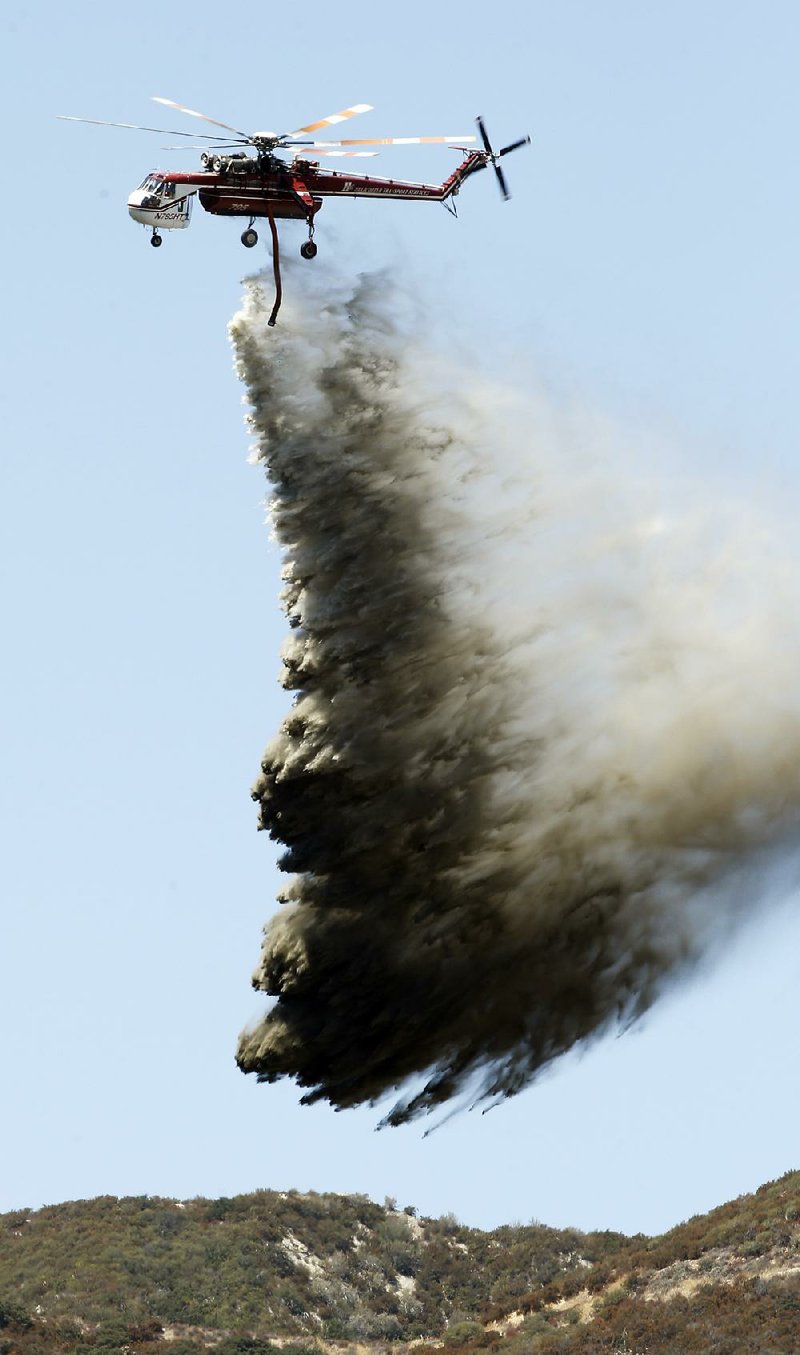SAN BERNARDINO, Calif. -- A California wildfire raced up and down canyon hillsides Wednesday, engulfing homes and forcing thousands of people to flee.
The blaze had raged across 40 square miles as of late Wednesday, though by the end of the day the first foothold was gained and more than 1,500 firefighters had the blaze 4 percent contained.
Authorities could not immediately say how many homes had been destroyed, but they warned that the number will be high.
"There will be a lot of families that come home to nothing," San Bernardino County Fire Chief Mark Hartwig said after flying over a fire scene he described as "devastating."
"It hit hard. It hit fast. It hit with an intensity that we hadn't seen before," he said.
No deaths were reported, but cadaver dogs were searching the ruins for anyone who was overrun by the flames.
The blaze broke out Tuesday in Cajon Pass, a highway and rail corridor through mountain ranges that separate Southern California's major population centers from the Mojave Desert and Las Vegas. The cause of the fire wasn't immediately known.
Five years of drought have turned the state's wildlands into a tinderbox, with eight fires burning from Shasta County in the far north to Camp Pendleton just north of San Diego.
"In my 40 years of fighting fire, I've never seen fire behavior so extreme," Incident Commander Mike Wakoski said Wednesday.
Residents like Vi Delgado and her daughter April Christy, who had been through a major brush fire years before, said they had never seen anything like the Cajon Pass fire, either.
"No joke, we were literally being chased by the fire," a tearful Christy said as she and her mother sat in their minivan in an evacuation center parking lot in Fontana. They did not go inside because their dogs, three Chihuahuas and a mixed-breed mutt, were not allowed.
"You've got flames on the side of you. You've got flames behind you," Christy said, describing a harrowing race down a mountain road. She was led by a sheriff's patrol car while a California Highway Patrol vehicle trailed behind and a truck filled with firefighters battled flames alongside her.
She and her mother, on-site caretakers at the Angels and Paws animal-rescue shelter in Devore Heights, said it was only moments after they smelled smoke that flames exploded all around them.
More than 34,000 homes and about 82,000 people were under evacuation warnings as firefighters concentrated their efforts on saving homes in the mountain communities of Lytle Creek, Wrightwood and Phelan. They implored residents not to think twice if told to leave, but it appears many were staying.
"From reports that we were hearing, possibly up to half didn't leave," said Lyn Sieliet, a U.S. Forest Service spokesman.
"It does change the way that we can fight fire," she said. "Now we have to worry about the people in there as well as trying to protect the structures and trying to build a line of defense as the fire comes toward that area."
Six firefighters were briefly trapped by flames during the fire's early hours, when occupants of a home refused to leave and the crew stayed to protect them.
Hundreds of cars packed with belongings and animals left the town. The air for miles around the blaze was filled with smoke.
Although there was no official count on how many homes were lost, Eric Sherwin of the San Bernardino County Fire Department said Tuesday that he seen at least a dozen buildings go up in flames, some of them homes. Among them was the Summit Inn, a historic Route 66 diner near Interstate 15.
The interstate is a major route connecting Los Angeles to Las Vegas, and countless big rigs were parked Wednesday along it on both sides of Cajon Pass, waiting for it to reopen.
Less than 24 hours after the blaze began 60 miles east of Los Angeles, authorities had assembled a fleet of 10 air tankers, 15 helicopters and an army of firefighters, many of them just off the lines of a wildfire that burned for 10 days just to the east.
At a dawn briefing, half the firefighters raised their hands when asked how many had just come from an earlier blaze, part of several infernos burning across California this year. In all, 10,000 firefighters are fighting the eight blazes.
Meanwhile, a major blaze north of San Francisco was fading, and about 4,000 people in the town of Clearlake were allowed to return home.
Their relief was tempered with anger at a man who authorities believe set the blaze that wiped out several blocks of a small town over the weekend. That fire destroyed 175 homes and other structures in the working-class town of Lower Lake.
Damin Pashilk is charged with 14 counts of arson in 12 separate fires dating back to July 2015, as well as one count of attempted arson. He appeared in court Wednesday but did not enter a plea.
Information for this article was contributed by John Antczak, John Rogers, Robert Jablon, Andrew Dalton, Sudhin Thanawala, Kristin J. Bender and Don Thompson of The Associated Press.
A Section on 08/18/2016
